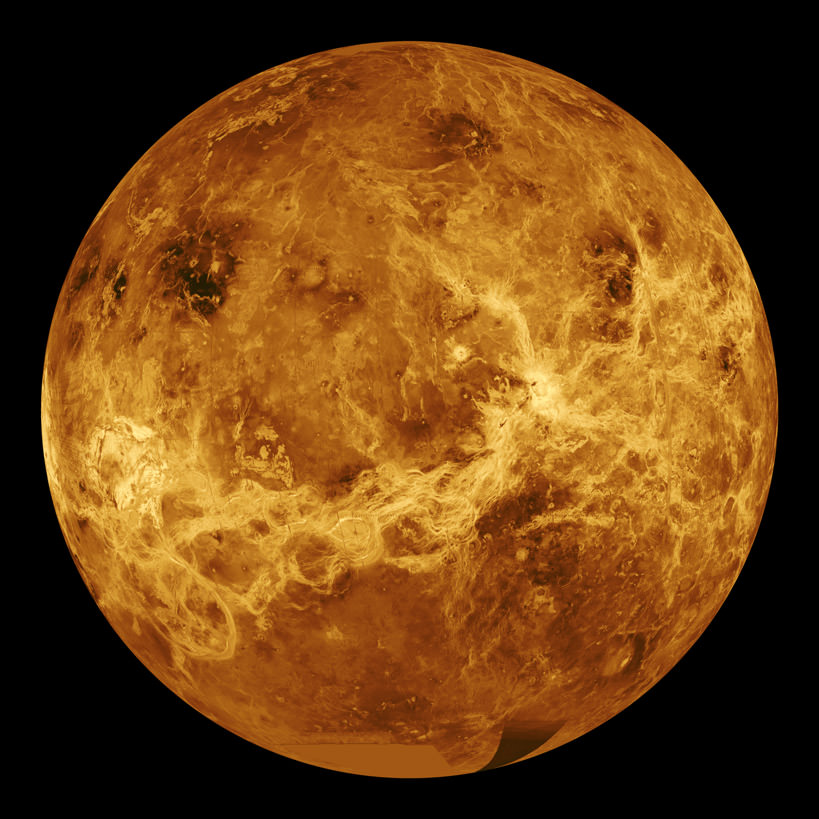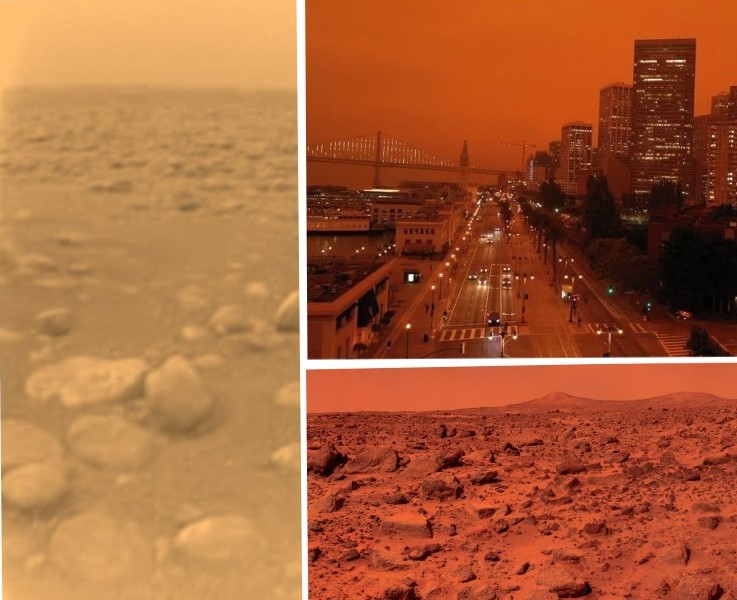Californians woke up to an alien-looking sky this morning, Wednesday, September 9, 2020.
Dense smoke and ash from the ongoing wildfires have been blown high into the upper atmosphere, blocking nearly all sunlight. This is due to extremely intense fire updrafts, according to climate scientist Daniel Swain. He said on Twitter that the smoke particles have been lifted as high as 50,000 feet (15,000 meters) which is 20,000 feet (6,000 meters) above cruising altitude of jet airliners.
The apocalyptic view had several planetary scientists comparing the sky to those of other worlds in our solar system. Cue Katie Mack:
Satellite views from the NASA/NOAA GOES West satellite shows how dense the smoke is above the US West Coast:
What are the similarities and differences between Earth’s atmosphere and other worlds like Venus, Mars and Titan? Katie Mack mentioned the hydrocarbons that float in Titan’s thick atmosphere, so let’s look there first.

Titan, the second largest moon in our solar system, has a dense, shroud-like atmosphere made mostly of nitrogen, like Earth’s, but with a surface pressure 50 percent higher than Earth’s. Titan has clouds, rain, rivers, lakes and seas of liquid hydrocarbons such as methane and ethane. NASA says that lakes and seas on Titan’s surface, also made of liquid hydrocarbons, could conceivably harbor life that uses different chemistry than we’re used to. Or, Titan could also be a lifeless world. One day we hope to find out.

Venus also has a thick atmosphere, which consists mainly of carbon dioxide, with clouds of sulfuric acid droplets. The thick atmosphere traps the Sun’s heat, resulting in surface temperatures higher than 880 degrees Fahrenheit (470 degrees Celsius). We discussed in a recent article how about 30 miles up from the surface on Venus, it’s about the same temperature and atmospheric density as on the surface of the Earth.
But the top level of clouds zips around the planet every four Earth days, driven by hurricane-force winds traveling at about 224 miles (360 kilometers) per hour. Atmospheric lightning bursts light up these quick-moving clouds. Speeds within the clouds decrease with cloud height, and at the surface are estimated to be just a few miles per hour.
If you could somehow stand on the surface of Venus, the view of the sky would look like a very hazy, overcast day on Earth. But the atmosphere is so heavy it would feel like you were 1 mile (1.6 kilometers) deep underwater.

Mars, on the other hand has an atmosphere is so thin that it is more than a hundred times lighter than that on Earth. Atmospheric pressure at ground level is a fraction of ours, and about the same as it is 35 kilometers above the Earth. Mars’ thin atmosphere consists almost entirely of carbon dioxide with small fractions of nitrogen, argon, oxygen, and a few other gases.
So, if Mars’ atmosphere is so different from Venus and Titan, why is Mars’ sky red sometimes, too? The dust from the Red Planet’s surface tends to hover in the atmosphere, just like dust in sandstorms here on Earth. This dust tends to absorbs blue light, which gives the sky a primarily red color.
But almost everything here on Earth right now are definitely different from the usual. Fellow science journalist Shannon Stirone said on Twitter that she’s lived through 36 fire seasons in the state of California and she has never seen the sky look so alien before.
Which seems to be par for the course for the year 2020.
Lead images are from Titan, by the ESA Huygen’s lander (left), a drone camera view of the apocalyptic skies in San Francisco’s Embarcadero around 10 a.m. on Sept. 9, 2020 from KGO-TV (top right) and Mars’ surface via NASA.

